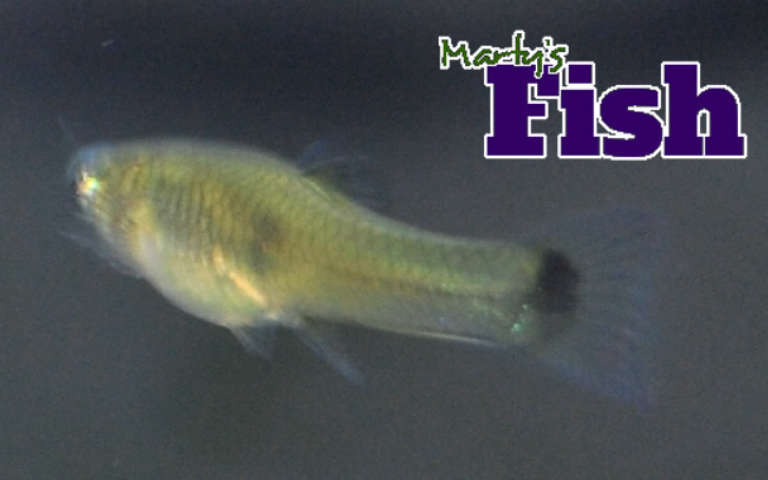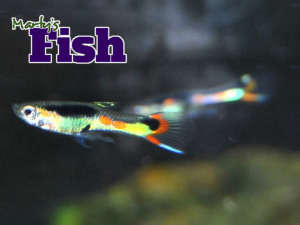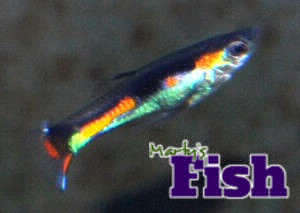
Male Orchid Endler’s vary greatly in colors and patterns. Although the overall look and basic patterns are easily recognizable as Orchid Endler’s, each individual differs one from another and once and a while the fry show coloration that is similar to other Endler’s Livebearer strains.
Colors in the males may become very pronounced if they are place in a well planted tank and intensify as the male Endlers mature. Females lack colors however may look somewhat yellowish depending on the environment it is kept in.Nice looking male Orchid Endler
Orchid Endlers have quite a bit of black on them. This deep black coloration helps to make the other colors stand out dramatically.
The other two most predominant colors are red (orange/red) and shiny metallic bright green.
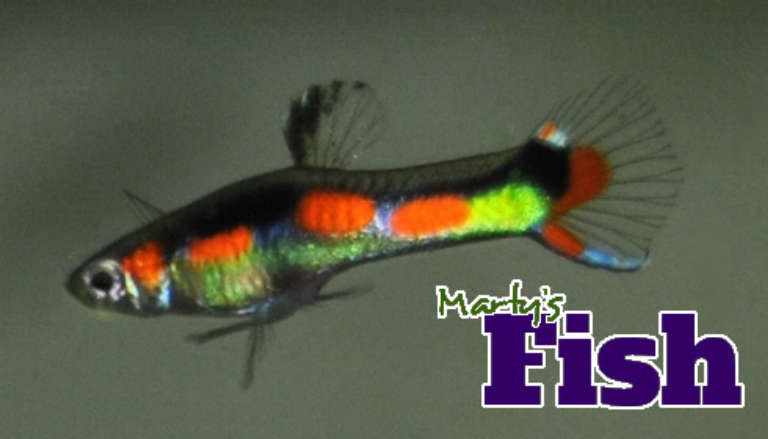
Male Orchid Endler with well defined red spots 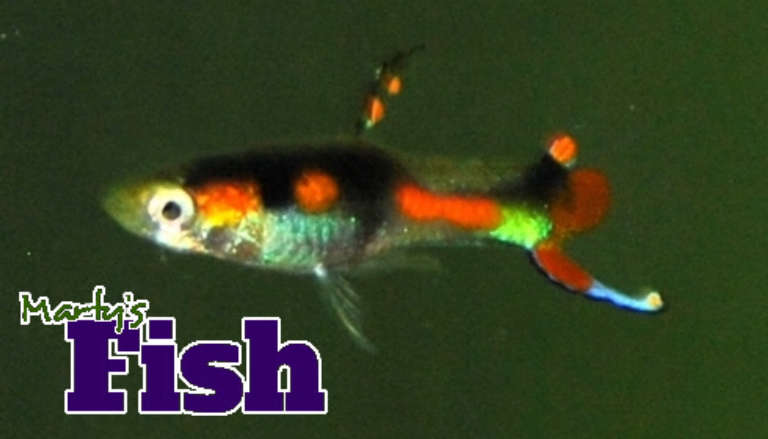
Beautiful male Orchid Endler
The Orchid Endlers will often have smaller, often less noticeable areas of light blue especially on the sword. Light blue seen in young males will often change to orange as they age.
The males will often turn it’s side toward a female and flash the bright colors at the females during courting.
The tail on a male Orchid Endler will usually have a small black area resembling a spot where the tail fin attaches to the body of the male Orchid Endler.
Nearly all Orchid Endlers have a sword of some type but most don’t extend past the tail fin. These swords are usually just colors that resemble a sword on a otherwise clear tail fin.
Occasionally a male may grow a sword that extends well beyond the caudal fin. In pure strains this sword is usually quite thin.
Young Male Orchid Endlers
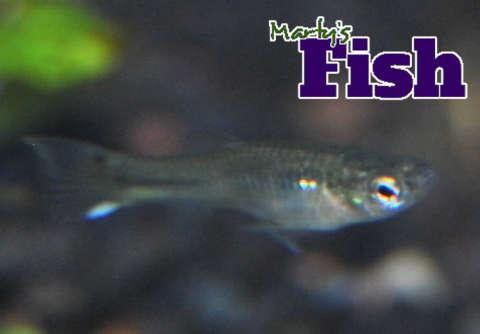
Young male Orchid Endlers start showing signs of color in a few weeks.
The first thing that will usually show is a small darkening area near the tail. Next you may see some dark spots starting to show up on the body of the young male Orchid Endlers Livebearer.
Soon colors will start to show up to form the sword. Later other colors will show up on the body of the Orchid Endler.
As the males mature, the orange/red areas will start to become more prominent along with some of the light blue areas (if the male develops any blue iridescence). The last color to really develop is the bright metallic green colors.
All the colors usually intensify as the male ages and begins to pursue the females. When the males are in their best color, it’s difficult to photograph the true beauty of these unique livebearers.
